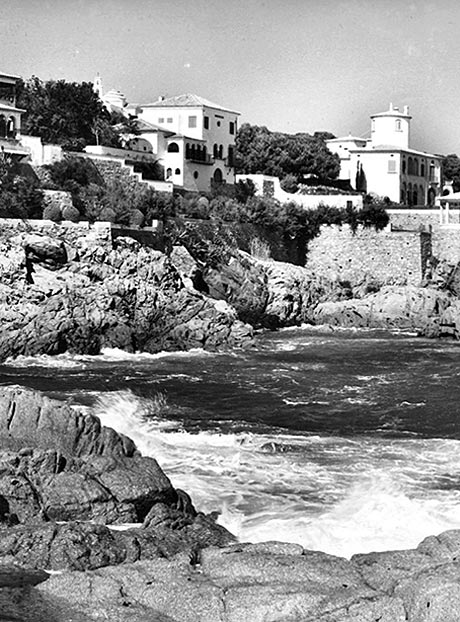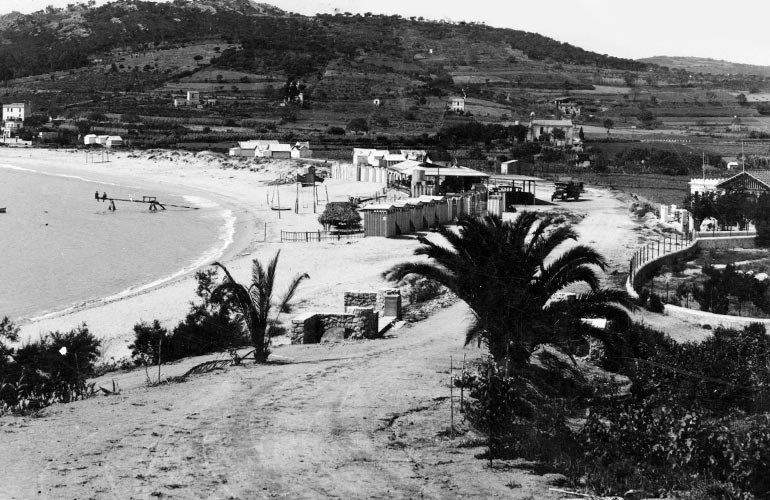Luxury Villas
Luxury houses in S’Agaró. If you want to become a part of one of the most privileged and historic areas of the Costa Brava, the luxury home development of S´Agaró-Vell demands your attention.
Luxury houses in S’Agaró. If you want to become a part of one of the most privileged and historic areas of the Costa Brava, the luxury home development of S´Agaró-Vell demands your attention.
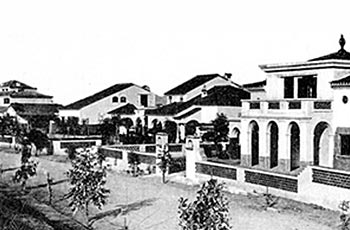
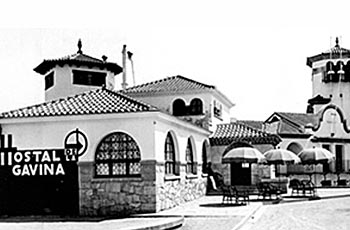
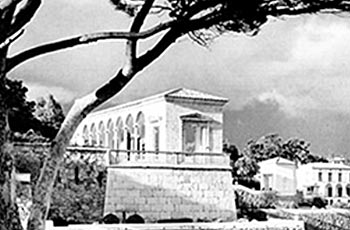
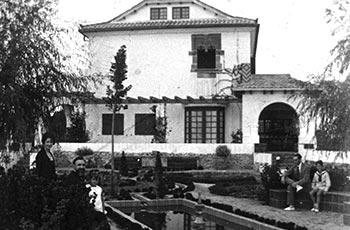
During the early twentieth century, a climate of high optimism characterised European society. Concepts such as going on holiday and investing in purchases of residential property in areas of outstanding natural beauty began to become more popular, especially among business people. The Costa Brava did not seem destined to play a significant role in this new trend, which at the time was more evident along the coastline of Cantabria. Nevertheless, there were those who recognised the potential of this remote part of Girona area before anyone else did.
In 1916, it seemed evident that the dreams of long-lasting prosperity that had characterised the previous decades had turned into the seemingly endless nightmare of the First World War. For various reasons, Spain had avoided taking sides in that conflict and, consequently, maintained a degree of tranquillity in the face of chaos throughout the rest of Europe. As a result, well-off personalities and families of the time continued to holiday in the Costa Brava resorts of Caldes de Malavella, Sant Hilari and Ribas de Freser. Thus it was that the father of a young Josep Ensesa Gubert acquired an extensive estate near Sant Pol.
Similarly, the small nuclei of S’Agaró and Tossa de Mar had already been quietly noticed and earmarked by some middle-class families. This increase in interest did not displease the entrepreneurial Ensesa Gubert – in fact, quite the opposite. Gubert saw the enormous potential of the area as a framework for a private residential development. Of course, the project still had to go through a lengthy preparatory phase in which Ensesa Gubert worked on the advice of the famed modernist architect Rafael Masó Valentí. The plans gained dimensions and details. However, even as this development was being designed for others to rest and relax, the 5,000 square metres of the property did not seem to be enough for what the entrepreneur had in mind. It was for this reason that the project began to acquire more adjacent land.
On 25th July 1924, building work finished on what would become the first villa of the estate. Of simple design and perfect whiteness, the new house looked out over the bay of Sant Pol, an impressive view that would become increasingly attractive over future years. At that time, Ensesa Gubert was able to opt for an expansive business model – as would be the case in other locations – and to embark on major construction projects. Nothing was further from the executive’s mind than saturating this wonderful place with numerous buildings. Therefore, the building plans for new properties followed specially laid-down criteria and included privacy fencing.
To ensure respect for the founding principles of the S’Agaró estate (exclusivity, privacy and tranquillity), prospective new residents of this privileged setting had to confirm their agreement to certain conditions. Firstly, the construction of new houses and modifications or extensions of the existing ones could only be carried out with explicit approval from the general architect of the estate. This requirement would help to maintain the aesthetics of the area and ensure that chalets were not oversize. Likewise, the designer’s remit included facilitating the construction materials and the work plans in general.
These covenants and others were included in the property deeds, so they applied to subsequent owners as well as the first. In other words, any property purchaser had to accept the same conditions. From this, we can see how S’Agaró began to consolidate its powerful image of a selective and harmonious estate that has continued to the present day.
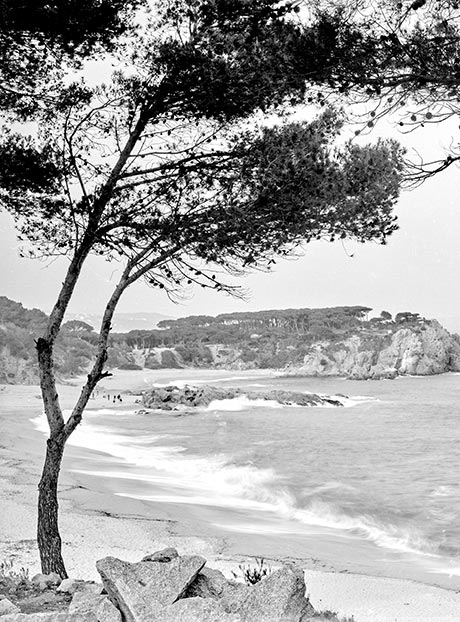
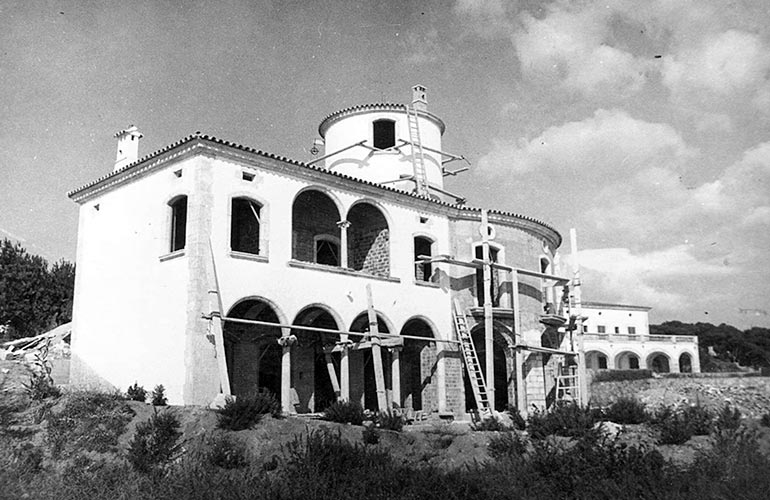
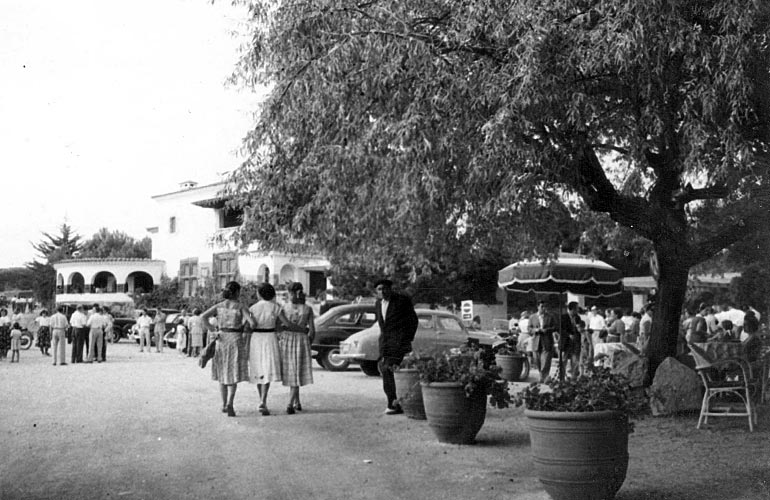
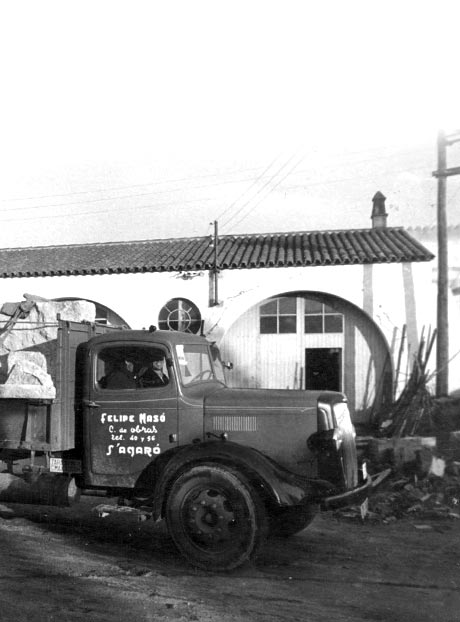
During the 1930s, the turbulent political situation in Spain did not stop the ambitious plans for the development. In 1932, the Hotel de S´Agaró-Vell opened its doors. It did not take long to become well established, not only locally but also throughout the Costa Brava. Awarded a coveted five-star hotel rating, the Gavina became an undisputed flagship for the area. Despite having only eleven guest rooms initially, it soon came to reinforce the aura of exclusivity that S’Agaró breathes.
Another very significant milestone for churchgoing owners was the building of a church within the development. With the task in the expert hands of Rafael Masó, part of the cloister of the old convent of Sant Francesc de Girona became the new chapel. The authorities could have refused the project planning permission for the transfer of these remains; the fact that it finally went ahead was due to the effort and passion that Masó put into conservation. The consecration of the church to the Virgin of Hope was one of the first public events of the still young S’Agaró.
It was at this point in history, in 1933, that the pace of events became dizzying. Ensesa Gubert reached an agreement with Felip Masó Ferragut – an important figure in the management of Catalonia’s rural areas – to create the construction company that would from then on be responsible for the building projects in the estate. The team quickly secured the services of architects Rafael Masó and Ramón Folguera and the number of houses increased significantly, though the new properties were always built in accordance with the original principles. In this way, the community of owners grew to accommodate all kinds of personalities who come to S’Agaró, attracted by the considerable fame that the complex had begun to acquire.
The beginning of the Spanish Civil War totally paralysed work in S’Agaró. Moreover, during the conflict, some factions of the Republican army occupied S´Agaró-Vell. Fortunately, there was no significant damage to property or its facilities. This relatively intact survival through the war years greatly simplified the return to normality during the 1940s. However, at that time the country had begun to go through a post-war crisis with scarce supplies and a widespread feeling of pessimism. Once again, the management of the estate proved they were able to deal the situation and the negative outlook.
To ensure the continuity of the project it became necessary to focus gradual, long-term interest on it through advertising. The promotional campaigns were a great success and saw various events organised. This marketing activity continued during the 1950s, which began with a special event to commemorate the twenty-fifth anniversary of S’Agaró. At first, the promoters arranged inspection trips to attract visitors from Girona and Barcelona. However, these special promotions were not restricted merely to the conventional. S’Agaró community leaders organised all kinds of events, some as remarkable as horse and tennis competitions. However, this exercise was soon brought to an end to maintain the character of the area.
The years which followed saw continued dinners, cocktail parties and galas. Additionally, to foster the Catalan culture (of which the founders were very proud, there were folk dances and other traditional festivities. Revenues from these initiatives far exceeded the most optimistic forecasts.
During the 1960s and 1970s, in the wake of the country’s impressive economic take-off, S’Agaró saw prominent personalities attending its most exclusive events. The Minister of Information and Tourism (Manuel Fraga) and the French President, Vincent Auriol, were some of the formal guests.
News of the charming estate and its surroundings spread among glamorous international stars. Iconic characters including the likes of Frank Sinatra, Ava Gardner, John Wayne, Sean Connery, Liz Taylor, Peter Sellers, Orson Wells and Lawrence Olivier strolled through the beautiful private gardens at various points. Spanish celebrities such as the musician Xavier Cugat, the multitalented Girona artist Salvador Dalí, the high-profile bullfighter Luis Miguel Dominguín and the famous Catalan writer Josep Pla also visited. Undoubtedly, S’Agaró had established itself as a benchmark for the most demanding visitors. Fortunately, this fame did not end its tranquillity.
In recent decades, the estate has developed its image as a place for rest and recreation, with enhanced privacy and security. The breathtaking landscape that captivated the pioneers who built the first villa remains the same for the current lucky owners who make up the exclusive community of the current S’Agaró. The houses have been rebuilt or renovated to modern standards. Additionally, the access roads have improved and the services provided have adapted to the present day. However, the elegance and luxurious atmosphere that began almost one hundred years ago remain unchanged. To this day, the story continues.
